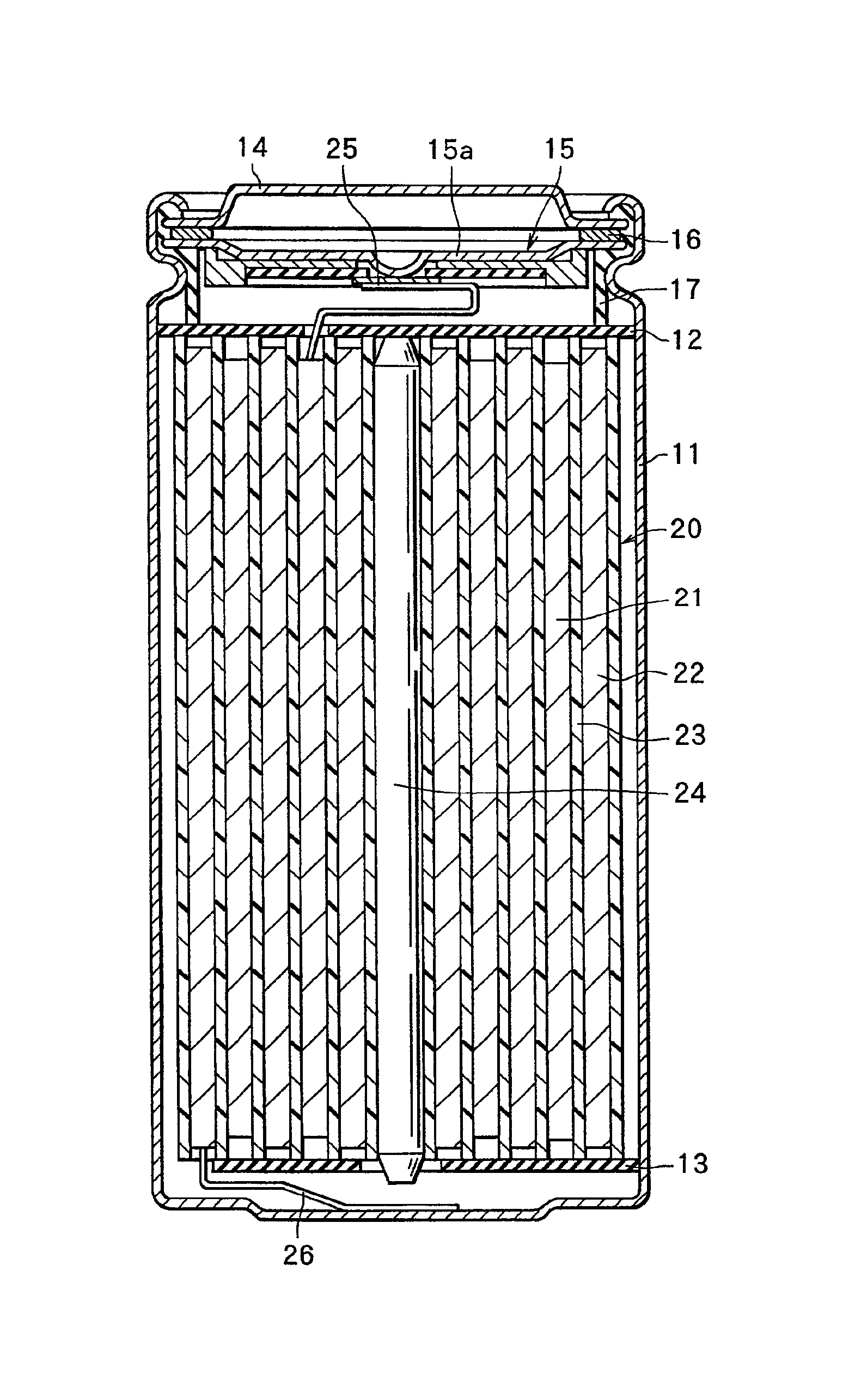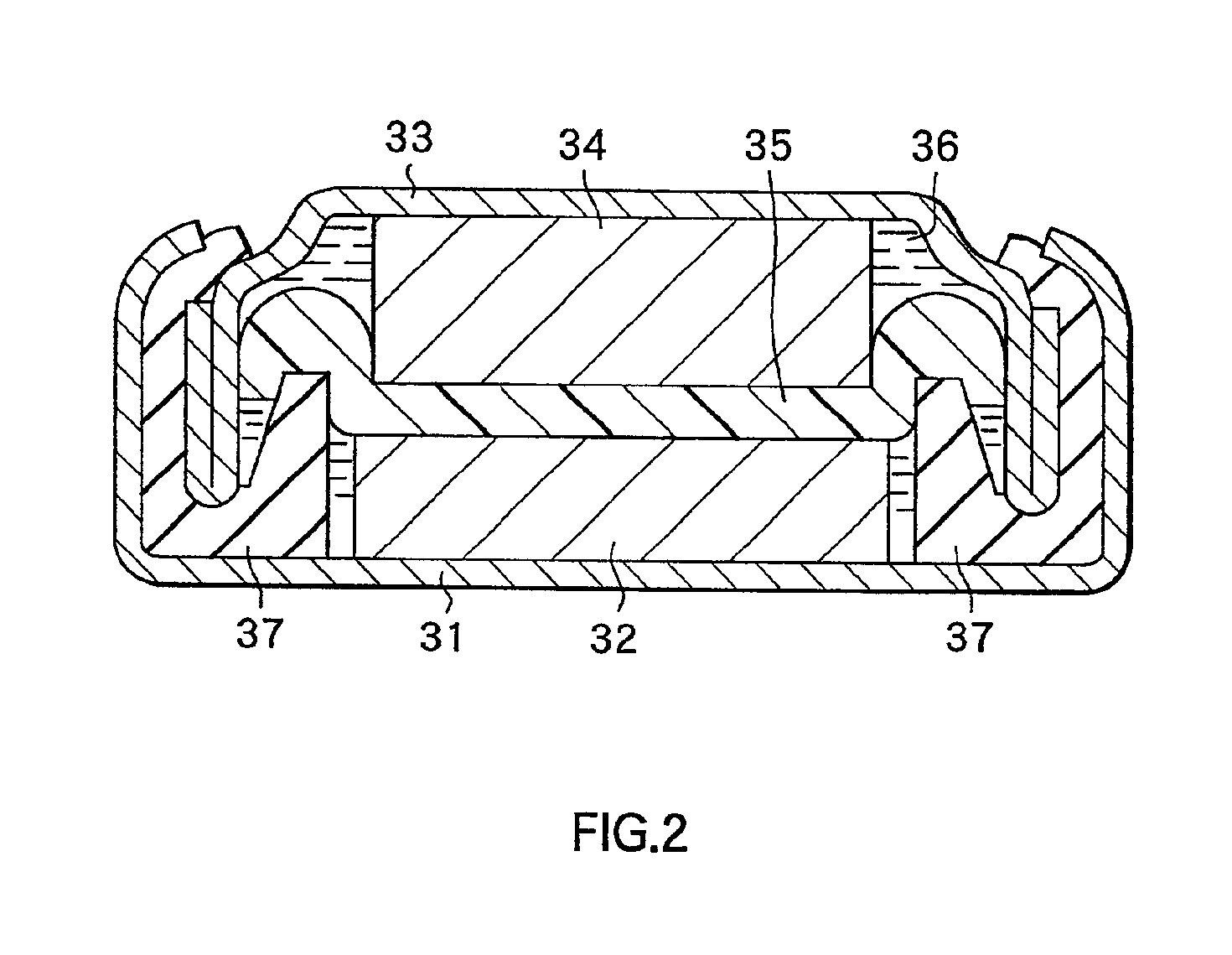Material for positive electrode and secondary battery
a positive electrode and secondary battery technology, applied in the direction of nickel compounds, cell components, sustainable manufacturing/processing, etc., can solve the problems of insufficient capacity, inability to obtain sufficient charging/discharging cycle characteristics, and relative low thermal stability, so as to improve the charging/discharging cycle characteristic and battery capacity, excellent preservation characteristics
- Summary
- Abstract
- Description
- Claims
- Application Information
AI Technical Summary
Benefits of technology
Problems solved by technology
Method used
Image
Examples
embodiment
[0012]In the followings, an embodiment of the invention will be described in detail by referring to the drawings.
[0013]FIG. 1 shows the cross sectional structure of a non-aqueous electrolyte secondary battery according to an embodiment of the invention. The secondary battery is of what is called a cylindrical type. In a battery can 11 having a substantially hollow cylindrical column shape, a rolled electrode body 20 obtained by rolling a band-shaped positive electrode 21 and negative electrode 22 with a separator 23 in-between is provided. The battery can 11 is made of, for example, iron (Fe) plated with nickel (Ni). One end of the battery can 11 is closed and the other end is open. A pair of insulating plates 12 and 13 is placed vertical to the peripheral face of the roll so as to sandwich the rolled electrode body 20.
[0014]A battery cover 14, and a safety valve mechanism 15 and a PTC (positive temperature coefficient) device 16 which are provided inside the battery cover 14 are at...
example
[0043]Specific examples of the embodiment will be described in detail by referring to FIG. 1.
examples 1-1 to 1-8
[0044]First, manganese-contained complex oxide LixMn2-yCryO4 containing lithium, manganese, and chromium as the first element (Ma) was fabricated by mixing lithium carbonate (Li2CO3), manganese dioxide (MnO2) and dichromic trioxide (Cr2O3) and then calcining it for five hours at 850° C. in air. In Examples 1 to 8, the mixing ratio of the base materials were varied and the manganese-contained complex oxide was adjusted so as to have the composition shown in Table 1. Then, the manganese-contained complex oxide obtained thereby was pulverized to have the mean particle size of 20μ. Measurement of the mean particle size is performed by laser diffraction.
[0045]
TABLE 1Manganese-Retention rate ofHigh load dischargingCapacitycontainedNickel-containedgeneral discharging capacityenergy after preservationretention rate atoxideoxideafter preservation atat high temperature200th cycle at normalxyzhigh temperature (%)(Wh)temperature (%)Example 1-11.00.20.2973.487Example 1-20.90.20.2973.386Example 1...
PUM
| Property | Measurement | Unit |
|---|---|---|
| mean particle size | aaaaa | aaaaa |
| temperature | aaaaa | aaaaa |
| mean particle size | aaaaa | aaaaa |
Abstract
Description
Claims
Application Information
 Login to View More
Login to View More - R&D
- Intellectual Property
- Life Sciences
- Materials
- Tech Scout
- Unparalleled Data Quality
- Higher Quality Content
- 60% Fewer Hallucinations
Browse by: Latest US Patents, China's latest patents, Technical Efficacy Thesaurus, Application Domain, Technology Topic, Popular Technical Reports.
© 2025 PatSnap. All rights reserved.Legal|Privacy policy|Modern Slavery Act Transparency Statement|Sitemap|About US| Contact US: help@patsnap.com



